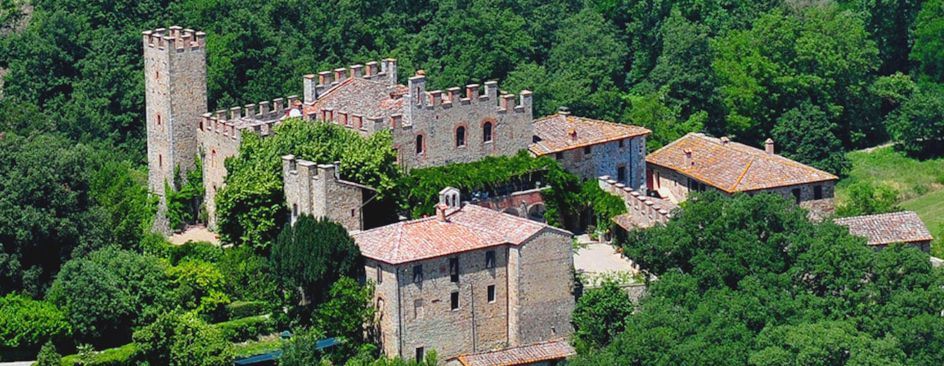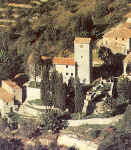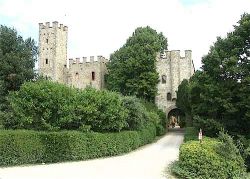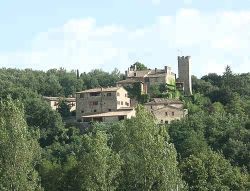Castle of Montalto
The Castle of Montalto is a private residence with vacation apartments to rent. It is not open to the public except for visitors enjoying the Sunday in Chianti Tours Programme.

Castle of Montalto
The Castle of Montalto was built, possibly as early as the 9 C, by Berardo, first count of the Berardenga family which gave its name to this area. The castle was documented by 11 C. Montalto was aligned with Sienna in its incessant struggle with Florence, and was repeatedly damaged and rebuilt during the 12 C and 13 C. Eventually the impoverished Berardengas were obliged to cede the castle to the Siennese, who refortified it with yet higher walls and maintained a garrison against the Florentines.
After a long siege in 1478, people refused to live at Montalto because of its dangerous location. In 1546, Sienna ceded the castle and its lands to Giovanni Palmieri under whom Montalto became autonomous in alliance with Siena. Soon after, however, with the help of the Emperor Charles V, Cosimo de' Medici led Florence to victory over Siena. When all of Tuscany became peaceful under Medici domination, Montalto lost its brief independence and the Palmieri descendants turned it into a residential manor, decorating the Hall of Arms with the frescoes depicting life on the estate's farms.
Extensive restoration of the castle was initiated during the 19 C and completed in 1908. Montalto had a population of about 120 at the time of the Second World War, when fighting again raged in the woods during repeated passages of German and Allied troops. After the war, the little community gradually became depopulated as country people moved into towns, and now only the owners live here all year round. In the course of a thousand years the Castle has changed hands only three times.
After a long siege in 1478, people refused to live at Montalto because of its dangerous location. In 1546, Sienna ceded the castle and its lands to Giovanni Palmieri under whom Montalto became autonomous in alliance with Siena. Soon after, however, with the help of the Emperor Charles V, Cosimo de' Medici led Florence to victory over Siena. When all of Tuscany became peaceful under Medici domination, Montalto lost its brief independence and the Palmieri descendants turned it into a residential manor, decorating the Hall of Arms with the frescoes depicting life on the estate's farms.
Extensive restoration of the castle was initiated during the 19 C and completed in 1908. Montalto had a population of about 120 at the time of the Second World War, when fighting again raged in the woods during repeated passages of German and Allied troops. After the war, the little community gradually became depopulated as country people moved into towns, and now only the owners live here all year round. In the course of a thousand years the Castle has changed hands only three times.
The region between Florence and Siena, the Chianti wine zone, is home to a remarkably high number of castles, fortified farm houses and walled abbeys. Some of these are open to the public.

Albola, or better Old Albola, rises above the territory of Radda in Chianti.



